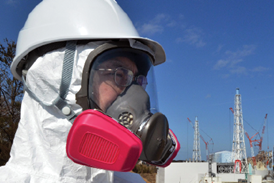Features – Page 4
-
 Features
FeaturesRisk management for modern era
Profile: Carl Leeman The chief risk officer for Katoen Natie understands the risks facing us in the digital age … and he’s keen to spread the message
-
 Features
FeaturesChain reaction
Businesses should consider the ethical issues surrounding supply chain labour or else beware the risk of incurring brand and reputational damage
-
 Features
FeaturesHow to: Avoid health and safety prosecution
Individual prosecutions for health and safety offences are on the rise, so it is more important than ever to ensure that senior managers are fulfilling their duties
-
 Features
FeaturesHow to: Cope with kidnapping
No longer reserved for movies and millionaires, kidnapping is a very real possibility for executives working and travelling in risky environments abroad. Make sure you know how to keep yourself, and your staff, safe
-
 Features
FeaturesHow to: Deal with complexity
In this increasingly uncertain world, organisations need to evolve their risk management frameworks to further enhance their resilience to unexpected shocks. Here are five practical steps to do so
-
 Features
FeaturesGreat contraction reveals price of poor money management
The economic turmoil has exposed flaws and inefficiencies in corporate treasury departments that is costing companies much more than they realise, according to a survey
-
 Features
FeaturesHow to learn from banks on proportionate control
Good risk management can open up opportunities. But too many controls can become costly, cumbersome, and create a false sense of security
-
 Features
FeaturesUnderstanding and measuring risk appetite
Effectively measuring risk appetite and determining risk tolerance allows companies to analyse their objectives and take advantage of opportunites
-
 Features
FeaturesResilience through sustainability
Businesses must shift to an embedded sustainability strategy to guarantee growth and competitive advantage in the future
-
 Features
FeaturesManaging your way out of a crisis
Recent research shows that most companies will face a value destroying catastrophe at least once every five years. Here two experts show how responding well to one can actually help boost the value and reputation of your company
-
 Features
FeaturesKeeping the lights on
Energy risk is a growing concern in a world where resources are becoming increasingly scarce, but mitigating this risk now offers a wealth of additional benefits
-
 Features
FeaturesHow to fight fraud
Financial institutions are forced to trust their employees, yet 70% would consider committing workplace fraud. Here are steps towards a counter-attack
-
 Features
FeaturesHow to: Combat fraud
What can risk managers do to deal with fraud in their organisations, asks James Bray
-
 Features
FeaturesHow to: Seize the opportunity in risk
The real market movers are those that are able to embrace risk as part of their business models and use it to their advantage. But when the stakes are high, how do you make sure you come out a winner?
-
 Features
FeaturesHow to stay nimble amid the hurdles
Regulators are running risk managers ragged as they struggle to meet ever-more complex general requirements as well as the needs of their business. We check out the obstacles in their path
-
 Features
FeaturesHow to: Organise a whistleblowing programme
An open culture and positive reporting will identify more black swans than formal procedures alone
-
 Features
FeaturesHow to: Ten things you should know about the Bribery Act
The new UK Bribery Act is a big deal. It’s a complex and far-reaching piece of law and if something goes wrong, the buck stops at board level. Read on for the top 10 ways to protect your organisation
-
 Features
FeaturesThe human side of the risk equation
Why taking a social scientific approach to risk management can help you see into the future more effectively
-
 Features
FeaturesBribery Act: Ten things you need to know
The new UK Bribery Act is a big deal for any company operating in the UK: it’s a complex and far-reaching piece of legislation and, if something goes wrong, the buck stops at board level
-
 Features
FeaturesRisk strategies with more bite
In the wake of the financial crisis, regulators are paying more attention to how businesses quantify the risk they undertake. What approaches are being taken across the profession?






